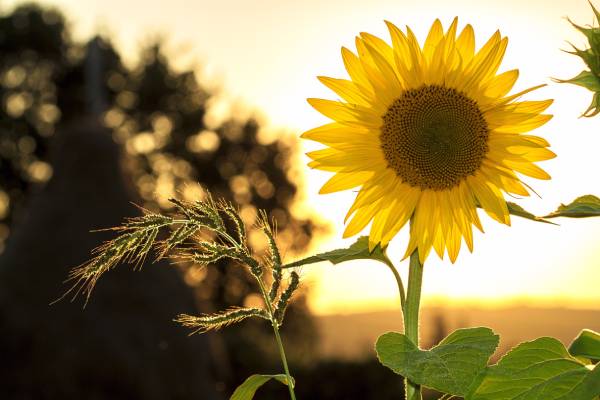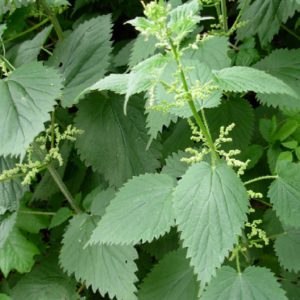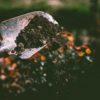Types of Vermiorganic Phytosanitary
Nettle slurry
Nettle slurry is used as a fungicide, to control fungi and to correct iron chlorosis, due to its high greening power.
Its use produces a decrease in pests, greater development of roots in plants, better growth, greater nitrogen fixation in the soil and greater availability of carbon in the soil (darker color of the earth).
With regular application, it improves soil structure and water retention capacity.
It facilitates the propagation and maintenance of the microorganisms necessary for a healthy soil.
Dosage
- Application by foliar fumigation: Dilute from 15 to 30ml for each liter of water, every 10 – 15 days, or according to the need of the crop.
- Spray with a very fine drop in the late afternoon, avoiding hours of high heat and sun.
- Application by fertigation: Dilute 50ml for each liter of irrigation water.
- Application frequency: It is preferable to maintain a preventive treatment every 10 or 15 days, however the frequency can be increased or reduced depending on the health needs of the crop.
Horse tail
The Horsetail (EQUISETUM arvense) is a perennial herbaceous plant whose name ‘arvensis’ in Latin means “of the prairie, field or grasslands”. It is a fungicide that has a high content of silica in addition to potassium and calcium. It favors the structure of the plant by acting directly on the roots, making it more resistant. It has been used traditionally in a multitude of medicinal remedies.
It should be noted its richness in organic acids such as nicotine, palustrin, etc. and equisetonin as a fungal toxin. Components that make Horsetail one of the most effective fungicides. It also acts as an insecticide against aphids and spider mites.
Silicon reduces the effects of excess water around the plants that leads to the appearance of fungi. The high percentage of silica in the plant reduces the impact of humidity. The appearance of fungi is more frequent with high humidity and long periods of rain. In these cases, horsetail is used as a preventive measure against fungal-related diseases and to reduce the need for sulfur applications.
It is pulverized as finely as possible, covering the greatest amount of plant and leaf surface. Horsetail extract serves as a stabilizing means for plants and the prevention and fight against sucking parasites. The high content of silicic acid strengthens the cell structure of plants and makes it more difficult for parasites to destroy the plant surface. For the production of the liquid extract, it should be boiled for approximately 20 minutes in water. In this way the silicic acid is separated.
When silicon accumulates on the walls of epidermal cells, it appears to decrease perspiration as well as fungal infections. In plant leaves, silicon is deposited under the cuticle and on the epidermal cells, this layer limits the loss of water through the leaves and hinders the penetration and development of fungal hyphae.
Therefore, we can affirm that silicon, in addition to its physical functions in the soil and in the development of plants, acts as a preventive fungicide against infections caused by fungal fungi, and protects plants against attacks by insects that cause damage to the epidermis of crops.
Horsetail benefits
The beneficial effects of silicon on plant growth and development are scarce under optimal conditions, however, it is extremely important in stressful situations. This is because silicon is deposited on the cell walls of the xylem vessels and prevents them from being compressed under conditions of high perspiration caused by drought to heat stress.
The silicon-cellulose membrane in the epidermal tissue of the leaves also protects the plant tissues against excessive loss of water through perspiration due to a reduction in the diameter of the stomatal pores. On the physiology of plants, silicon acts as a protector and regulator of photosynthesis and other enzymatic activities.
KytoGreen
KitoGreen ™ is a natural polysaccharide of non-animal origin derived from a fungus (Aspergillus niger). This innovative compound is the result of more than ten years of academic and industrial research, at KitoZyme and at the University of Liège. This unique ingredient is patented and manufactured exclusively in Liège (Belgium).
KitoGreen ™, which is widely used for human nutrition, medical or beverage applications, has now been authorized as a basic substance in the European Union for organic farming, sports turf or garden applications.
With a unique low molecular weight, KitoGreen ™ is absorbed by both leaves and roots.
It promotes the resistance of the plant and the seeds against bacteria and pathogenic fungi. At the same time, it supports plant growth through its stimulating effect and promotes healthy soil life, as well as increased vitality for the plant.
This biotechnology of non-animal origin is a new environmentally friendly tool to reduce pest control with chemicals. KitoGreen ™ allows to increase the yield, the germination rate and the growth of the treated plants. The material has been shown to have positive effects on symbiotic mycorrhiza.
In addition to this, KitoGreen ™ has proven effects that help plants against abiotic stressors and climatic factors. Increases resistance to drought and reduces water consumption, improves resistance to cold and reduces the effect of salinity. For agricultural or ornamental uses, the marked prophylaxis against pests and the best plant growth will give you a higher yield, as well as radiant and vigorous plants.
Organic farming with KytoGreen
KitoGreen ™ can be used in organic farming according to Annex II of Commission Regulation (EC) No. 889/2008 regarding “basic substances” in organic farming. Only basic substances as defined in Article 23 (1) of Regulation (EC) No. 1107/20092 of the European Parliament and of the Council that are covered by the definition of “food” in Article 2 of Regulation (EC ) No. 178/20023 of the European Parliament and of the Council and that have plant or animal origin. The substances should not be used as herbicides, but only for pest and disease control. (See Appendices I and II of SANCO / 12388/2013 for specific conditions).
Below you can see a papaya plantation in El Ejido (Almería), treated with Kitogreen.









